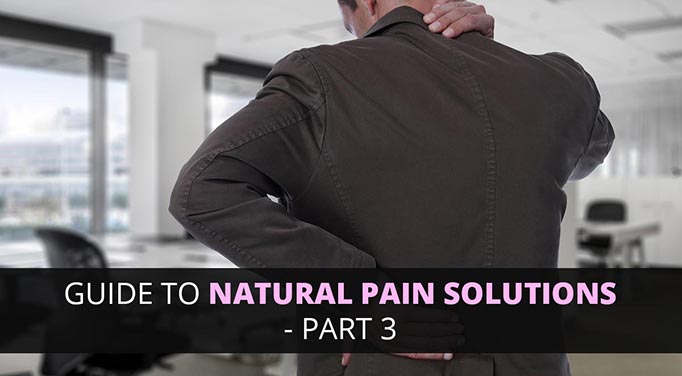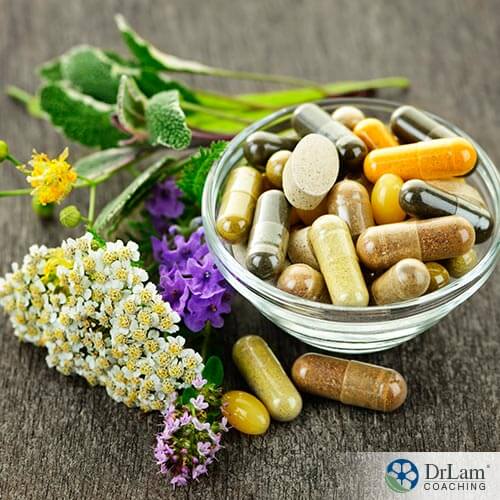 We’ve already covered the foundation by addressing stress, inflammation, and the importance of strengthening your adrenals, which are already big steps in natural pain solutions. Now it’s time to look at some of the supplements and more specific protocols you can implement once you’re ready.
We’ve already covered the foundation by addressing stress, inflammation, and the importance of strengthening your adrenals, which are already big steps in natural pain solutions. Now it’s time to look at some of the supplements and more specific protocols you can implement once you’re ready.
And, as always, you should only do so with the guidance of a trusted healthcare professional and only if it fits your condition. Otherwise, you may find yourself shooting in the dark and making things worse. Slow and steady is the right approach, even if you’re desperate for some relief.
In animal studies, animals fed a tryptophan-deficient diet had an increased sensitivity to painful stimuli. Tryptophan elevates brain serotonin levels, and serotonin decreases sensitivity to pain in animal and human studies. On the other hand, chronic opioid use actually decreases serotonin turnover in the central nervous system. This effect can actually be reversed by L-tryptophan.
Supplements like 5 HTP can be useful. Also, for a more holistic approach, you can try removing gluten and dairy if you haven’t already, and take 1000-2000 mg of tryptophan a day, then check how it’s going after four to six weeks. You should take amino acid therapy on an empty stomach or with a bit of fruit to increase insulin stimulation. Add St. John’s Wort for anti-inflammatory, pain modulating, and mood elevating effects all rolled into one.
Different studies showed the pain relief came after different doses and treatment periods, so it will depend on your specific needs. But one thing that you can note is that increased pain sensitivity is a feature of fibromyalgia – a condition that can make even brushing your hair or turning over in bed painful. So if you suffer from it, seriously consider tryptophan.
Did you know that magnesium deficiency is extremely widespread yet under-detected? Some symptoms of magnesium deficiency include muscle cramps, spasms, weakness, and tremors, as well as fatigue, confusion, insomnia, poor focus and memory, irritability, and loss of appetite. It’s also indicated in back pain, multiple sclerosis, epilepsy, hypertension, arrhythmias, migraines, PMS, constipation, asthma, depression, tinnitus, abdominal pain, and stress-dependent disorders.
As you can see, magnesium deficiency shares some symptoms with AFS, and as it has an effect on stress-dependent disorders, it is definitely worth looking into if you suffer from AFS. You’ll still need to be careful not to overdo it with supplements though, as your system will be more sensitive to imbalances of vitamins and minerals when your adrenals are weak.
One of the reasons its indications are so numerous is because magnesium is involved with over 350 enzyme systems. So, if you’re not sure if you have a deficiency, it’s a good idea to get tested. RBC magnesium is the better test. Taking 400 mg a day is the usual recommendation, though it will depend on your condition. Vitamin B6 also helps increase the entry of magnesium into muscle cells.
Migraines, in particular, respond to magnesium. It’s been found that tissue levels of magnesium are low in migraine patients, especially those that suffer from menstrual migraines. Taking oral magnesium for natural pain solutions was also found to prevent migraines.
Other than magnesium, taking a B2 supplement and riboflavin help too, and doing acupuncture and manipulating the upper cervical spine can be beneficial. But the most important thing for migraine relief is to get rid of allergenic foods. A study that put 60 migraine sufferers on five days of eating only lamb, pears, and drinking bottled water showed some interesting results.
Wheat was found to be the most reactive food, causing migraines in 78% of the sufferers, followed by oranges in 65%, then eggs in 45%, tea, and coffee in 40%, chocolate and milk in 37%, and corn, yeast, and cane sugar in 33%. By avoiding 10 common allergenic foods, 85% of the sufferers became headache-free, and the rest saw a huge reduction in the number of headaches per month.
So, you might want to give those foods a rest and see which ones you react to when reintroducing them one by one. This, along with the above suggestions, will give you far better results than running around to different doctors and doing different CTs just to be given pain medication. And remember, regular use of pain medication can actually cause more headaches.
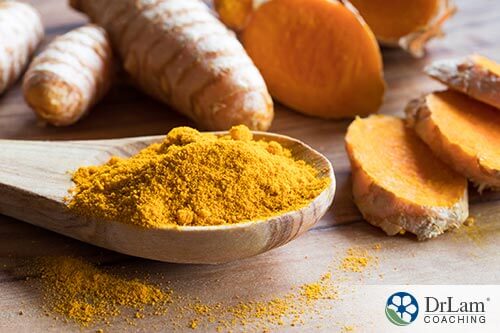 Curcumin is a chemical found in turmeric, a bright yellow/orange spice that is commonly used in Indian cuisine. Its health benefits have been known for many years now, and people across the world are catching onto them and adding the spice to their cooking. Curcumin has powerful anti-inflammatory, anti-viral, and anti-tumor properties, and seems to bind to vitamin D receptors to work together with vitamin D.
Curcumin is a chemical found in turmeric, a bright yellow/orange spice that is commonly used in Indian cuisine. Its health benefits have been known for many years now, and people across the world are catching onto them and adding the spice to their cooking. Curcumin has powerful anti-inflammatory, anti-viral, and anti-tumor properties, and seems to bind to vitamin D receptors to work together with vitamin D.
Although adding turmeric to your diet or making golden tea with it is beneficial, using it as part of your natural pain solutions may require a free form of curcumin in order to increase its bioavailability. Taking free curcumin that is combined with three lipids in capsule form makes it easier for your system to absorb and use. Free curcumin is actually 65 times more bioavailable, allowing you to use lower doses.
Other benefits of free curcumin include bypassing liver metabolism (thus avoiding degradation there), crossing the blood-brain barrier, and absorption via the lymphatic system. It’s so safe that it can be given orally, in injections, and even as a suppository vaginally and rectally.
Studies showing its effects on rheumatoid arthritis are particularly encouraging. In one study, 45 subjects with active rheumatoid arthritis were given 500 mg per day of curcumin and their treatment was found to be more effective in reducing joint swelling and tenderness than treatment with 50 mg per day of diclofenac sodium (a nonsteroidal anti-inflammatory drug).
Although diclofenac is effective at reducing pain, it can cause renal issues and gastric ulcers – a high price to pay for pain relief.
In a study involving one hundred fibromyalgia patients with vitamin D deficiency, patients were randomized to receive 50 thousand units of D3 or a placebo weekly for a total of eight weeks. The group taking D3 had significant improvement in their pain scores than those taking a placebo.
Cases of back pain, seasonal affective disorder, and osteoarthritis also found improvement with vitamin D supplementation.
Vitamin D supplements can be taken orally or through intramuscular injections. The goal is to raise vitamin D levels to greater than 60.
Adding vitamin K2 to the mix can give even better results, as K2 works with vitamin D to support bones and the tendon-bone attachment sites.
Glutathione is a powerful antioxidant. It’s the primary cellular defense against reactive oxygen species, also called free radicals. An accumulation of free radicals is responsible for oxidative stress, which is implicated in many degenerative diseases, age-related cancers, and the speeding up of the aging process. Glutathione also has detoxification properties.
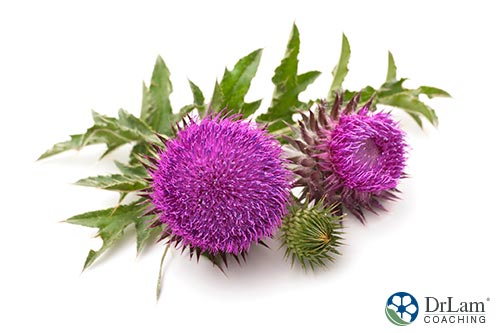 Glutathione is indicated in chronic inflammation, autoimmune diseases such as Lyme disease, multiple chemical sensitivities due to the inability to detoxify, liver problems, SIBO, kidney problems, brain fog, neuropathy, dementia, multiple sclerosis, Parkinson’s disease, and other challenging health issues.
Glutathione is indicated in chronic inflammation, autoimmune diseases such as Lyme disease, multiple chemical sensitivities due to the inability to detoxify, liver problems, SIBO, kidney problems, brain fog, neuropathy, dementia, multiple sclerosis, Parkinson’s disease, and other challenging health issues.
Intravenous glutathione helps protect neurons, telomeres, and mtDNA. It has been shown to help Parkinson’s disease patients see a 42% decline in disability, and this improvement continued for up to four months after the cessation of the treatment.
Some other natural pain solutions include:
As you can see, there are many different natural pain solutions, and they can be part of a holistic and functional medicine approach, which helps support the entire system rather than focusing on one part or one symptom.
However, just because they are natural doesn’t mean they can’t be misused. Any substance with medicinal properties should always be taken with care and under supervision.
If you have AFS, you need to take special care to ensure you do not overdo it with supplementation or too many changes at the same time. If your NEM’s detoxification response is not up to standard, your system may get clogged by an excess of these supplements, and you’ll start to experience even more paradoxical symptoms.
So, take it one step at a time. First, begin by detoxifying your system. If you have advanced AFS, you may want to first strengthen your adrenals or do a very gentle detox. If it turns out you have some heavy metal toxicity, you might have to undergo chelation therapy as well. Make sure to proceed with the advice of a trusted medical professional though.
If your microbiome needs a boost, prebiotics and probiotics may give some good initial support. If your digestion isn’t optimal, digestive enzymes can also help. Once these important components are in place, the supplements you try will have a much better chance at working efficiently and quickly.
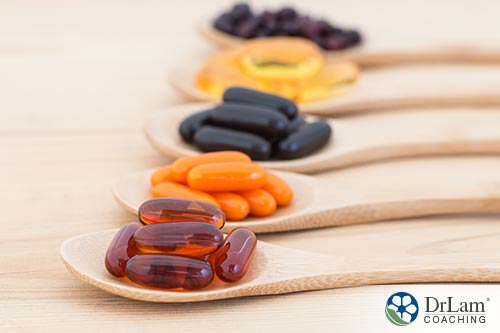 As your adrenals and detoxification response get better, you can start trying out different supplement combinations. But, whatever you do, do not take too many at the same time, and without understanding how they work together or how they affect your hormones and adrenal glands. Consider using acupuncture, chiropractic support, and other forms of non-ingestible natural pain solutions so that you don’t only rely too heavily on supplements alone.
As your adrenals and detoxification response get better, you can start trying out different supplement combinations. But, whatever you do, do not take too many at the same time, and without understanding how they work together or how they affect your hormones and adrenal glands. Consider using acupuncture, chiropractic support, and other forms of non-ingestible natural pain solutions so that you don’t only rely too heavily on supplements alone.
© Copyright 2018 Michael Lam, M.D. All Rights Reserved.
